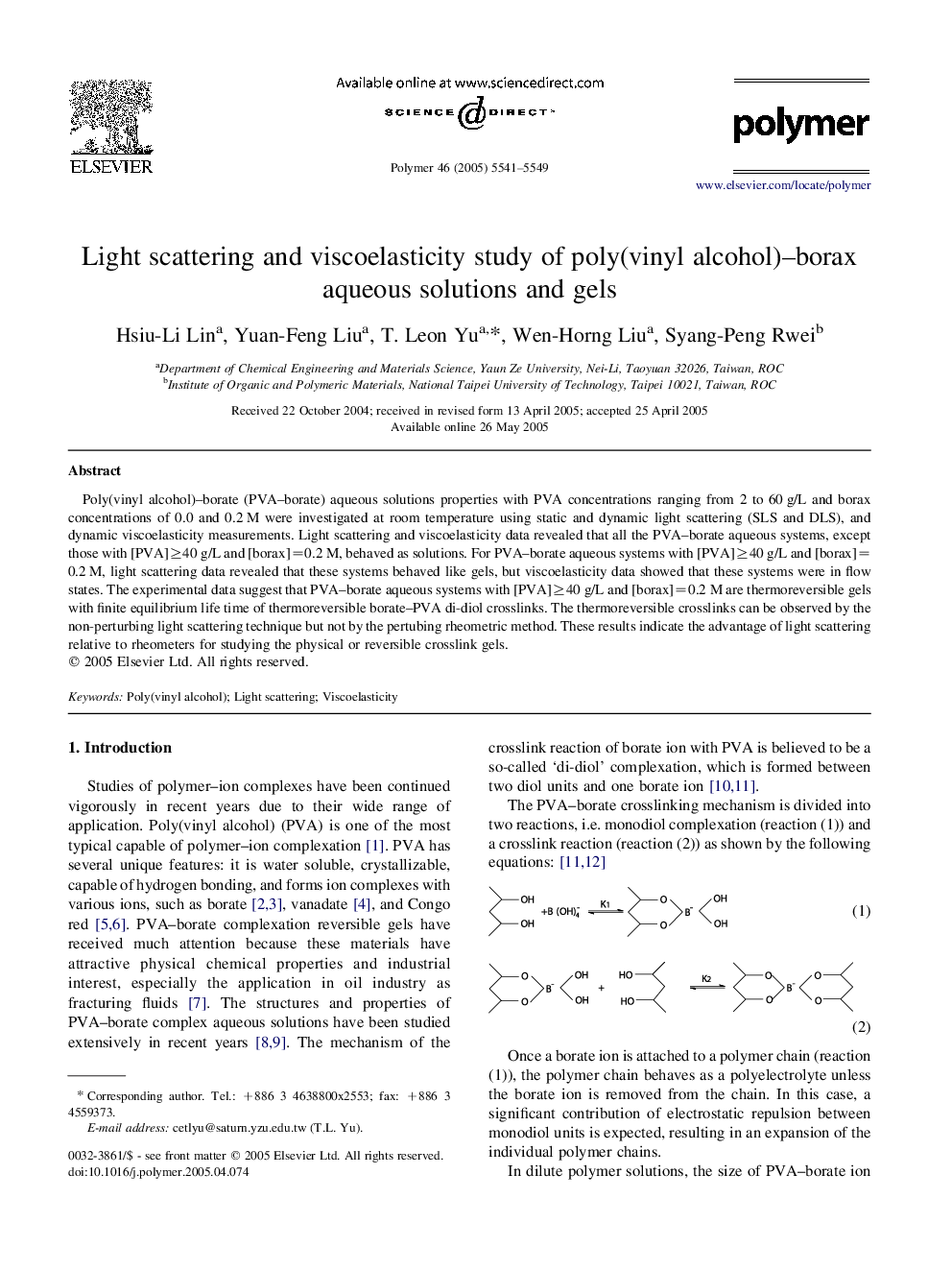| Article ID | Journal | Published Year | Pages | File Type |
|---|---|---|---|---|
| 5190891 | Polymer | 2005 | 9 Pages |
Abstract
Poly(vinyl alcohol)-borate (PVA-borate) aqueous solutions properties with PVA concentrations ranging from 2 to 60 g/L and borax concentrations of 0.0 and 0.2 M were investigated at room temperature using static and dynamic light scattering (SLS and DLS), and dynamic viscoelasticity measurements. Light scattering and viscoelasticity data revealed that all the PVA-borate aqueous systems, except those with [PVA]â¥40 g/L and [borax]=0.2 M, behaved as solutions. For PVA-borate aqueous systems with [PVA]â¥40 g/L and [borax]=0.2 M, light scattering data revealed that these systems behaved like gels, but viscoelasticity data showed that these systems were in flow states. The experimental data suggest that PVA-borate aqueous systems with [PVA]â¥40 g/L and [borax]=0.2 M are thermoreversible gels with finite equilibrium life time of thermoreversible borate-PVA di-diol crosslinks. The thermoreversible crosslinks can be observed by the non-perturbing light scattering technique but not by the pertubing rheometric method. These results indicate the advantage of light scattering relative to rheometers for studying the physical or reversible crosslink gels.
Related Topics
Physical Sciences and Engineering
Chemistry
Organic Chemistry
Authors
Hsiu-Li Lin, Yuan-Feng Liu, T. Leon Yu, Wen-Horng Liu, Syang-Peng Rwei,
